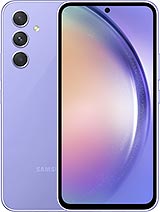Realme 11 Pro
Introduction
Realme's series 11 has been official for a month, but until now, those phones were available exclusively in China. Well, that's over now, as the Realme 11 Pro and Realme 11 Pro+ will be hitting the shelves in India and Europe soon. And we kick off the Realme series 11 exploration with the most beefed-up specimen - the Realme 11 Pro+.
We are glad to see Realme returning into the mid-range segment, as their last official global smartphones were from Realme Series 9. While Series 10 were technically global, the Pro models were never made available outside India.
Let's circle back to Realme 11 Pro+ and its most notable change - the design. The 11 Pro+ is a departure from the typical glossy phones we've seen for years. The maker has partnered with the former Gucci designer Matteo Menotto, and the Lychee Leather Design is the fruit of this collaboration.
The Realme 11 Pro+ is a thin and curved smartphone with a premium vegan leather back panel with stitches and a cool zipper-like split in the middle. The camera housing has been completely revamped, too, and now looks like something you'd expect to see on a Huawei phone. The new design screams luxury, but it doesn't look over the top, and we do like the changes, at least on paper.
The Realme 11 Pro+ green and gold models are available with this design, but Realme has kept the black one out of this fashion loop for those looking for something, well, less stylish.
The new model packs a 6.7-inch AMOLED screen with a ton of premium specs such as 120Hz refresh rate, 10-bit color depth, 360Hz touch response, and 2160Hz PWM dimming. It runs on top of the MediaTek Dimensity 7050 5G chipset, and the base storage is now 256GB.
The highlight of the Realme 11 Pro+ is its 200MP primary camera that relies on Samsung's HP3 sensor. It is advertised as capable of 2x and 4x lossless zoom, continuous auto-zoom when tracking a moving subject, and has support for Super NightScape and Moon mode. The sensor has a bright f/1.69 23mm lens with advanced SuperOIS stabilization.
The other cameras on the Realme 11 Pro+ are an 8MP ultrawide, a 2MP macro, and a 32MP selfie shooter. 4K video capturing is supported only on the main camera, while the front and the UW ones max out at 1080p video resolution.
Other notable Realme 11 Pro+ include stereo speakers, a 5,000mAh battery, and blazing-fast 100W SuperVOOC charging.
Realme 11 Pro+ specs at a glance:
- Body: 161.6x73.9x8.2mm, 183g; Glass front, leather or plastic back, plastic frame.
- Display: 6.70" AMOLED, 1B colors, HDR10+, 120Hz, 950 nits (peak), 1080x2412px resolution, 20.1:9 aspect ratio, 394ppi.
- Chipset: Mediatek Dimensity 7050 (6 nm): Octa-core (2x2.6 GHz Cortex-A78 & 6x2.0 GHz Cortex-A55); Mali-G68.
- Memory: 256GB 12GB RAM, 512GB 12GB RAM, 1TB 12GB RAM.
- OS/Software: Android 13, Realme UI 4.0.
- Rear camera: Wide (main): 200 MP, f/1.7, 23mm, 1/1.4", 0.56µm, PDAF, OIS; Ultra wide angle: 8 MP, f/2.2, 16mm, 112˚; Macro: 2 MP, f/2.4.
- Front camera: 32 MP, f/2.5, 22mm (wide).
- Video capture: Rear camera: 4K@30fps, 1080p@30/60/120/480fps, 720p@960fps, gyro-EIS; Front camera: 1080p@30fps.
- Battery: 5000mAh; 100W wired.
- Connectivity: 5G; Dual SIM; Wi-Fi 6; BT 5.2, aptX HD; NFC.
- Misc: Fingerprint reader (under the display, optical); stereo speakers.
While the Dimensity 7050 5G chipset is relatively new, it is pretty much identical to the Dimensity 1080 inside the Realme 10 Pro+ and the Dimensity 920 in the Realme 9 Pro+. And considering the AMOLED screen is the same as on the Realme 10 Pro+, we'd understand if the new 11 Pro+ doesn't feel like a major update. Let's not forget that the 10 Pro+ was not exactly a global phone, though.
There is only one thing we consider as an omission on the Realme 11 Pro+ - splash resistance. Xiaomi has been offering IP53-rated smartphones for years now, and we do expect Realme to make the same effort. However basic this protection is, it gives some peace of mind when it's raining outside or when you have your phone in the same room when you take a shower.
Unboxing the Realme 11 Pro+
The Realme 11 Pro+ ships in a typical black/yellow paper box. The retail bundle contains a 100W GaN power brick and a 10W-rated USB-C-to-A cable.
There is also a paper compartment, which has a soft transparent case for some extra protection. And, like most mid-range smartphones, the Realme 11 Pro+ also arrives with a thin anti-scratch film on its display. This basic protector is a huge smudge magnet, though, so we've decided to peel it off on day 1.
Design, build quality, handling
The Realme 11 Pro+ is the first Realme from the Number series that looks different and in a pretty good way. The new 11 Pro+, together with the 11 Pro, adopts a brand-new Lychee Leather Design that was co-designed with the ex-Gucci designer Matteo Menotto.
The primary change since the previous generation of Realme mid-rangers is the back panel - it is now as curved as the screen glass. It has a faux leather cover with a Lychee-like texture and 3D-printed stitches surrounding the zipper-like middle. This zipper is sealed with transparent plastic, though, so there is nothing actually to touch here.
The new camera circle is gigantic for sure, but fitting to the overall design and looks like a Huawei high-end setup. The vinyl-like middle part is also eye-catching and complements the elegant shape.
While the Realme 11 Pro+ surely looks expensive, like a fashion accessory, its build quality is not premium. The phone has a glossy plastic frame, and its back panel is also made of plastic, along with the huge camera ring. The screen, of course, is covered by some sort of tempered glass.
The Realme 11 Pro+ is not a splash-resistance smartphone, unfortunately.
The Lychee Leather Design is available for the gold and green models, while the black one has a clean back with a matte finish - there is no leather texture here, no stitches, and no zipper.
The whole front is home to the 6.7-inch AMOLED panel. While its protective glass has curved sides, the screen itself is completely flat underneath.
Naturally, the display has minimal bezels and a tiny perforation for the 32MP selfie camera. And while we do appreciate the small punch hole, the Monk in us is frustrated the camera itself is not centered in that hole.
Anyway, the Realme 11 Pro+ has stereo speakers, with the earpiece sitting above the screen doubling as a speaker. And because of that, there is another grille at the top of the phone for better sound dispersion.
Realme has installed an optical fingerprint scanner under the screen, and it works like a charm. The sensor is fast and reliable, though should you use a screen protector, you will need to rescan your fingerprints.
Realme also offers this neat Quick Launch function, which can launch a specific app upon a successful fingerprint scan. You can assign up to five actions on the Quick Launch menu.
We've talked plenty about the designer back panel, but let's look at the huge camera circle. It is jutting out big time out of the back, but because it's massive, there is no space for wobbling when you are using the Realme 11 Pro+ on a desk.
The 200MP camera is at the center of that big circle, surrounded by the 8MP ultrawide camera, the 2MP macro cam, and the LED flash.
The plastic frame of the Realme 11 Pro+ looks nice. It has no controls on the left.
The volume and power keys are on the right.
The top of the frame accommodates the second outlet for the top speaker and one of the mics.
The primary microphone is at the bottom, together with the dual SIM tray, the USB-C port, and the other speaker. Naturally, the bottom speaker is louder.
The Realme 11 Pro+ is a thin smartphone, lightweight even. Thanks to its unique design, the phone offers a secure grip, and we never felt like snapping the bundled case. Even better, the vegan leather back is not prone to smudges and fingerprints, which is quite rare these days.
We are also quite happy with the build quality - the Realme 11 Pro+ always felt balanced in hand, with a gap-free sturdy design. And while there is no apparent metal on it, it is not cheap; on the contrary, it feels as luxurious as it looks. And despite the fashion-centric design, we never found the Realme 11 Pro+ over-the-top or flashy.
Overall, we are happy with the new Realme 11 Pro+ and its signature design. And the only thing we miss here is some basic ingress protection; everything else is close to perfection.
A premium 6.7-inch AMOLED screen
The Realme 11 Pro+ utilizes a 6.7-inch AMOLED panel of extended 1080p resolution (394ppi) and with a ton of premium specs such as 10-bit color depth, 120Hz refresh rate, 360Hz touch response, 2160Hz PWM dimming, and even HDR10+ support.
The panel has one of the tiniest punch holes to make way for the selfie camera, and it is protected by slightly curved tempered glass.
The 10-bit color depth allows the screen to display over one billion colors, while the high refresh rate will allow the UI and compatible apps to be rendered at 90fps and 120fps for an incredibly smooth experience. And the games will surely appreciate the fast 360Hz touch response. Finally, the 2160Hz high-frequency PWM dimming should reduce strain on the eyes when using the screen at a brightness lower than 100 nits or so.
We've completed our display test, and the Realme 11 Pro+ did very well. We recorded 470 units of maximum brightness when manually controlling it, and 793 units of max automatic brightness when we faced the screen with a bright light.
Realme is promising 950 nits of peak brightness, and the screen is indeed capable of such when showing HDR content with smaller white patches.
The minimum brightness at point white is just 1.8 nit.
Color accuracy
The Realme 11 Pro+ has four color modes in Settings - Vivid which corresponds to DCI-P3 color space, Natural - sRGB color space, and two Pro modes where you can choose between Cinematic (accurate P3) and Brilliant (widest color available) options. Each of these modes offers a color temperature slider.
The default Vivid color option offers very good accuracy towards P3 targets, with the only exceptions being the bluish-white and grays. The Cinematic Pro mode, and the Natural one, on the other hand, have outstanding accuracy to P3 and sRGB spaces, accordingly.
Refresh rate
The Realme 11 Pro+ has three refresh rate modes - Auto Select, High, and Standard.
The High and Auto modes work similarly - they use the maximum 120Hz across the user interface and some supported apps and switch to 60Hz for static picture, video playback (but not video UI), and incompatible apps like Google Maps and Camera app.
The Auto Mode is a bit more restrictive - it analyzes the app and then decides if it's worth using 120Hz or not. We found that many apps, like web browsers, video apps like Netflix, and office apps, among others are limited to 60Hz.
The only time we saw the screen use 90Hz was on the lock screen.
Finally, the Standard option is straightforward - the phone always uses a 60Hz refresh rate, and all apps are capped at 60fps.
HDR and streaming
The Realme 11 Pro+ comes with an HDR10+ certified display and Widevine L1 DRM support. It is recognized as HDR10-capable by YouTube, but Netflix serves 1080p SD content and detects no HDR support.
Visual enhancements
The Realme Display options menu offers two visual enhancements - Video Color Boost and Bright HDR Video Mode. The first one tries to widen the color gamut in SDR content and increases the battery consumption. It is available in a limited selection of apps.
The Bright HDR Video Mode increases the brightness when playing HDR videos and improves the overall HDR experience. It also increases power consumption, of course.
Battery life
The Realme 11 Pro+ is powered by a 5,000mAh battery, the same capacity as the one inside the Realme 10 Pro+, and 500mAh more than the cell inside the Realme 9 Pro+.
Realme has shared some official test numbers in its press materials - the phone should last over 29 hours on calls, over 18 hours on videos, over 400 hours on standby, almost a day when listening to music, and 8 and a half hours when gaming.
Well, we don't test all of these, but the test we did are a close match to Realme's promises.
The Realme 11 pro+ scored a total endurance rating of 112 hours. It did great across all tests - over 33 hours of talking, over 17 hours of web browsing, and over 17 hours of video playback. Note that our video test ends when the battery reaches 10%, so we consider the phone capable of delivering over 18 hours of videos.
Charging speed
The Realme 11 Pro+ supports the whooping 100W SuperVOOC fast wired charging. The phone ships with a 100W GaN charger in the box, which is just great.
Realme advertises a full charge in 26 minutes and a 17% charge in just 3 minutes.
Well, the charging is indeed that fast. We captured 27% c
harge in 5 minutes and 63% in 15 minutes.
A full charge took exactly 28 minutes.
Speakers - the loudness and audio quality
The Realme 11 Pro+ offers stereo speakers, just like the Realme 9 Pro+ and 10 Pro+. This setup is of the hybrid variety, where the top speaker has both front-facing and top-facing grilles, while the bottom one has just one grille and appears to be louder.
The speakers are balanced and offer similar audio quality, although the bottom one is louder and maybe a bit more bassy. Then again, because of their positioning and multiple outlets, when watching movies, playing games, or just listening to music, the sound balance is great.
The Realme 11 Pro+ scored a Good mark on our loudness test. The sound quality is good, too, the vocals are great, there is good high-frequency representation, and we can hear some bass, too.
Android 13 with Realme UI 4.0
The Realme 11 Pro+ boots Android 13 with Realme's latest UI v.4.0, so don't expect to see much of the Android 13. Still, the battery optimizations, media controls, color customizations, and privacy updates, among other improvements, are implemented in the custom UI version.
Realme is promising two generations of OS updates and three years of security updates on the Realme 11 Pro and Pro+.
Realme UI 4.0's most notable visual feature is the Aquamorphic theme, which offers a modern yet clean take on Android. It is a theme also available across Oppo and OnePlus phones. Realme UI 4.0. Android 13's Media Controls are present, along with smoother animations, dynamic widgets, and refined notification and control centers also come as part of Realme UI 4.0.
The Realme 11 Pro+ supports fingerprint unlock, and the optical under-display scanner works great - it's fast as they come. You can also set up face unlock for an even speedier unlock - though this is not as secure.
Always-on screen is available, and it can show the usual content - clock, date, notifications icons, and battery, but you can opt out of some of the information. The AOD has been expanded with Realme UI 4.0 with various themes, clocks, and even custom patterns to draw. The AOD now supports Spotify media controls, too.
The AOD can be power-saving (hide after a short motionless period), scheduled, or always on.
And while we are talking about personalization, Realme UI 4.0 is flexible when it comes to this. There is an entire Style (and Wallpapers) page in Settings. You can change wallpapers (live and static), switch to different icon packs, different quick toggles icon shapes, change fonts, and choose completely different colors that will change the entire Realme UI look. Different AOD themes and fingerprint scanner animations are available, too. You can even turn on/off Edge Lighting, which is independent of the Always-On Display.
The launcher has no-nonsense home screens, a simplistic and clean notification/toggles area, and an easy-to-use task switcher. An App drawer is available, too, and it is as clutter-free as one could hope for. You can opt out of the app drawer if you prefer.
The new launcher adds support for Large Folders. Any folder can be enlarged or shrunk. Realme UI 4.0 should also offer Dynamic Widgets, but we found no such widgets on the Realme 11 Pro+.
Dark Mode is available, but unlike before, it does not offer three different dark styles. Instead, Realme UI 4.0 uses a combination of the previous three gray hues.
There are many powerful tools within the settings menu if you want full control over your Android OS. Or you can leave everything as is and enjoy a hassle-free Android experience optimized by Realme's AI algorithms and machine learning.
You can also minimize an app to a floating window, now called a flexible window, because it's super easy to resize it on the go. You can exchange files between the full-screen and flexible apps by drag and drop.
Flexible windows are available within the Task Switcher or the Sidebar. If an app is compatible, you can do either of these or use the familiar Split Screen.




Task Manager • Split screen • Flexible window • Flexible window
And speaking about the Sidebar, it's quite familiar - a small visible mark on the edge of the screen that expands into a menu anytime you swipe on it. You can customize the actions for this menu and the app shortcuts that appear there.
The Smart Sidebar now offers a background stream, meaning you can put YouTube, or any streaming app, in the background, and it will continue to play sound. This works when the screen is locked, too. Neat!
The Realme 11 Pro+ also supports the RAM Expansion feature. As evident from the name, this feature lets you expand your smartphone's RAM - albeit virtually - by using the phone's internal storage. You can add from 4GB up to 12GB virtual RAM. This feature is active by default, and Realme has chosen 4GB for the default setting.
Within the Realme lab section, you will find Dual-mode audio, Sleep Capsule, and Heart Rate Measurement. The Dual-mode audio allows you to connect both wired and wireless headphones and listen to music through both. Sleep Capsule is a night mode, which restricts specific apps. And the Heart Rate Measurement uses the optical fingerprint scanner to measure your heart rate. It may not be that accurate, though.





Realme labs • Sleep Capsule • Heart Rate
Multimedia apps such as Photos, Music, and Videos - are provided by Realme. There is also a revamped File Manager and even a Phone Manager app. This completes the non-Google app list.






Photos • Music • Videos • Phone Manager • Phone Manager • File Manager
Realme 4.0 UI also supports this cool auto-pixelate feature, which can blur/pixelate sensitive information when you take a screenshot in WhatsApp or Messenger, and you intend to share it with others.
We liked Realme UI 4.0. The interface is clutter-free and easy to use, and it feels great when working with 120fp. Yet, it retains plenty of powerful tools should you choose to dig deeper and use them. You can read more about it and even watch our video about it in our dedicated Realme UI 4.0 review.
Performance and benchmarks
The Realme 11 Pro+ is the first smartphone we meet utilizing the Dimensity 7050 5G chipset by MediaTek. It is not exactly a new chipset, though, as it is a rebranded Dimensity 1080 SoC - the one inside the Realme 10 Pro+. And it is a minor improvement over the Dimensity 920 5G chip inside the Realme 9 Pro+, so if you hoped for a performance upgrade, we'd have to disappoint you - there is none.
This chipset has an octa-core processor with two Cortex-A78 performance cores clocked at 2.6GHz, and six Cortex-A55 clocked at 2.0GHz. The GPU is Mali-G68 MC4, and the chipset is still built on the 6nm process.
The global Realme 11 Pro+ is available in two memory options - 8GB RAM + 256GB storage, and 12GB + 256GB (ours). There are also 512GB and 1TB models in existence, both with 12GB RAM. The RAM is LPDDR4X, while the storage is UFS, probably v2.2.
The phone also supports Dynamic RAM Expansion with 4GB extra RAM enabled by default, but you can add up to 12GB.
And now, let's run some benchmarks.
The Dimensity 7050 has a capable processor, which handles very well whether both single-core and multi-core tasks. The Dimensity 1300s and the Exynos 1380's processors inside the OnePlus Nord2 T and the Galaxy A54 are a bit faster, though.
200MP camera on a budget
The Realme 11 Pro+ has a triple-camera setup on its back and a single camera at the front. Both the primary and selfie shooters have been upgraded with new high-res sensors - a 200MP Samsung HP3 for your regular photos and a 32MP imager for selfies.
The primary camera on the Realme 11 Pro+ features the 200MP Samsung ISOCELL HP3 1/1.4" sensor with 0.56µm pixels. It sits behind an f/1.69 23mm lens, supports Super QPD autofocus, and there is Super OIS. The latter is a term for hardware-level OIS with a 3° EDR OIS Algorithm that offers a 40% increase in lens reset speed. Additionally, there is 4-axis gyro-based stabilization.
The 'Super QPD' autofocus is Samsung's way of saying it can detect phase changes in both the horizontal and vertical direction, giving you more dependable autofocus across a wider range of subjects and use cases.
The new Samsung sensor allows for 2x and 4x lossless zoom in photos and features like Auto Zoom, where the camera auto zooms and crops on a subject and tries to keep it at the center of your frame, so you don't need to move your phone frantically when taking photos. The improved stabilization also enables handheld Starry Sky mode.
The main camera supports high-res shooting in 200MP and in 50MP.
The ultrawide camera uses an 8MP Sony IMX 355 sensor behind a 16mm f/2.2 lens. There is no autofocus. Night Mode works on this camera, too.
The third and final camera on the back is the macro one with either a 2MP OmniVision OV02B or a 2MP GalaxyCore GC02M1 sensor with an f/2.4 aperture lens and a fixed focus at 4cm. This camera cannot capture videos, and there is no Night Mode.
The selfie camera uses a 32MP Sony IMX 615 1/2.8" Quad-Bayer sensor with 0.8µm pixels and a 21mm f/2.45 lens. The focus is fixed, naturally. This camera has a wide-angle lens, wider than usual, and it can zoom in/out depending on the scene, and there are 0.8x (default) and 1x (cropped view) shortcuts.
Camera app
The camera app is the familiar Oppo/Realme one. There are fewer menus - most of the modes are now on the main Rolodex, which is good.
The viewfinder in the default Photo mode offers AI Scene Enhancement (also known as Chroma Boost or Dazzle Color) - it's like an advanced HDR mode, which may stack several images to offer even further improvements in the dynamic range. Still, the most prominent "improvement" is the higher color saturation. Auto HDR is available, too.
There are also four zoom shortcuts - 0.6x, 1x, 2x, and 4x.
You can use both the main and the ultrawide camera in the Pro mode; you get to tweak exposure (ISO in the 100-8000 range and shutter speed in the 1/8000s-30s range), white balance (by light temperature, but no presets), manual focus (in arbitrary 0 to 1 units with 0 being close focus and 1 being infinity) and exposure compensation (-2EV to +2EV in 1/6EV increments). RAW is available only on the main camera.
There is also a Street mode, where you can try some automatizations like Auto-zoom and various filters. The Auto Zoom crops on a selected subject and tries to keep it at the center of your frame, so you don't need to move your phone frantically when taking photos.
Daylight photo quality
The main camera saves 12.5MP photos in its default Photo Auto mode. The ones we took in broad daylight are easily flagship-grade. The resolved detail is plenty, there is no noise, we can praise the contrast, and the dynamic range is great but not unnaturally wide.
The colors are true to life, and the overall presentation is quite nice.
The daylight samples are quite similar in quality to the ones you'd get from a Galaxy S23 Ultra. This is enough to convince you that the Realme 11 Pro+ takes excellent photos with its main camera, rivaling the most expensive offers on the market. (And others may say the Galaxy S23 Ultra is overpriced and overhyped, but that's not the point of this review.)
All photos have this slightly overprocessed look - like they were first over-sharpened and then smoothened to mask this. This is a common thing shared by many flagships, and while we do acknowledge it may not be everyone's cup of tea, it is still a flagship-grade quality preferred by many.
Moving on to the 2x zoom, something that Realme claims to be of lossless quality. And the photos we took are indeed great! They are rich in detail, well maybe not as rich as the default output, but close, and the rest of their properties - noise reduction, contrast, dynamic range, color rendition - are a match to the 1x zoomed images.
The 2x zoomed photos are made by cropping the 12.5MP center from the 50MP high-res image, and some of them may come with blurred moving subjects (people, leaves) as the 50MP photo requires some image stacking.
The 4x zoom is not lossless, but it's not a mere digital upscaling either. In fact, we have every reason to believe that it's a 12.5MP crop from the center of the 200MP high-res image, and the photos do look good.
The level of detail across the 4x zoomed photos is acceptable, it's higher than what a digital zoom would have offered. There is a lot of visible noise, too, but not to an overwhelming extent. And the colors are realistic, the contrast is good, and the dynamic range is quite wide.
We appreciate the 4x zoom effort by Realme, and while it's not perfect, it's the best it could have been done with the technology at hand.
And speaking of the 200MP output, here are some samples. They do look artificial as they have been achieved by complex algorithms, there is no processing done (like noise reduction, color correction, HDR, etc.), and there is a ton of noise, but this is where the 4x zoom comes, and we'd say they are rather useful.
You can also shoot in 50MP instead of 200MP, and this is how the 2x zoom is done. The 50MP samples are enhanced, and they are detailed, and sharp, with a wide dynamic range and accurate colors. There is no visible noise here.
The Portrait mode defaults to 2x zoom, and the portraits we took at this magnification level are great. The subject's rendition is good, the detail is acceptable, the colors are realistic, and the dynamic range is wide, boosted by the Auto HDR. Note that if the light is not ideal, the portraits will come out noisy and soft.
The subject separation is proficient, and the background blur is convincing.
Portraits 2x zoom (default)
The 1x zoomed portraits are as good as the 2x ones but a bit more detailed. And if the light is not ideal, those would still come rather well, unlike the 2x zoomed photos.
Portraits 1x zoom
The 8MP photos from the ultrawide camera are of excellent quality, considering the budget nature of this camera. Their rendition and processing are a match to the main camera, down to the watery look, excluding the resolution, of course.
The ultrawide photos we took on this sunny day are great - the resolved detail is enough, there is no visible noise, and the corners are proficiently straightened. The contrast is great, too; the dynamic range is just right, and the colors are slightly more saturated but quite nice, nevertheless.
The 2MP macro photos are rather poor - their detail is mediocre, there is visible noise, and the colors are sometimes a bit desaturated. We cannot imagine many people using this camera often, if ever.
The selfie camera got an update on the Realme 11 Pro+ - it now uses a 32MP sensor, up from 16MP. It's still a Quad-Bayer imager, one that saves 32MP photos instead of 8MP.
The front camera has a wide-angle lens, and that's why you will see 0.8x (21mm) and 1x (26mm) zoom shortcuts. The 1x zoom crops and upscales from the default 21mm output.
Well, the 32MP selfies are very good. They have good detail when there is no HDR, and are acceptable when Auto HDR had triggered. The noise reduction is good, the colors are very pleasant, and the dynamic range is always wide.
We would have been happy with the 8MP selfies instead of the 32MP "unbinned" ones, but even as is - the selfie camera is a solid performer.
Selfies, 32MP
Low-light photo quality
The Realme 11 Pro+ camera supports Auto Nightscape. It works the same way as on other phones - when the light conditions are poor, you will see a small moon icon appear on the viewfinder - this means the photo will be shot with the help of Nightscape. If you don't want that, just tap on the moon icon to disable it.
The Auto Nightscape works only on the main camera at 1x zoom and the ultrawide camera. The moon disappears when you switch to 2x-4x zoom.
The photos shot on the main camera with Auto Nightscape are superb - they are bright and well exposed, with a wide dynamic range, pleasant color saturation, and free of noise. The resolved detail is not that great, but it's far from poor, too.
Turning the Nightscape OFF will lead to slightly more detailed and sharper photos, but one with a narrower dynamic range and many blown highlights.

The main camera, Night Mode OFF
The 2x zoomed photos we took with Auto Nightscape had no Night Mode involved whatsoever, as we established. They are pretty great, too, excluding the average detail. The lossless zoom is still at play here unless the light is extremely poor, and it tries its best to save a detailed photo. And often, it succeeds indeed.
You can go to Nightscape and use 2x zoom there, but the photos are very artificial and somewhat unpleasant. They are brighter and with wider dynamic range, but they are quite poor in detail as the lossless zoom is no longer at play here.


Main camera 2x zoom, Night Mode ON
The 4x zoomed photos at night seem to be upscaled from the 2x ones judging by their halved detail. They are usable but far from great, especially at 100% zoom.
Main camera 4x zoom
The 8MP ultrawide photos shot with the help of Auto Nightscape are usable for sure, but that's the best we can say about them. The Nightscape mode allowed the photos to keep an acceptable level of detail and tolerable noise; the color saturation is okay, too, and so is the dynamic range.
Turning off the Nightscape mode will save more detailed photos, but also darker ones, with narrower dynamic range and sometimes slightly desaturated colors.


Ultrawide camera, Night Mode OFF
We've noticed the Auto Nightscape chooses shorter "shutter" times compared to the dedicated Nightscape one. So, if you want even brighter ultrawide photos, and sometimes with lower noise, opting for the Nightscape mode on the Rolodex will do it.


Ultrawide camera, Night Mode ON
We also shot a couple of Starry Sky (handheld) and Light Trails (tripod) photos for you to enjoy. All of them look pretty good. There is also a Moon mode, but unfortunately, the Moon was not visible in the night sky during the single clear night we had this week.


Starry Sky • Starry Sky • Light trails • Light trails
And here's how the main camera stacks up against the competition in our extensive Photo compare database.
Video quality and stabilization
The Realme 11 Pro+ captures videos with all but the macro cameras. The main camera records video up to 4K at 30fps, and there's 1080p at both 30fps and 60fps. The ultrawide and the selfie shooters are limited to 1080p@30fps video capturing.
There is also an Ultra Stable option available on the Realme 11 Pro+, which uses the main camera with 1080p@60fps and heavily crops, so it can achieve action camera-like footage.
You can choose between the h.264 and h.265 codecs.
Electronic stabilization is always-on for the rear cameras and optional for the selfie one, but it doesn't work in 4K resolution.
The camera app is super generous with the bit rates - the 4K footage gets 50Mbps while 1080p/30fps is allocated a similarly above-average 20Mbps when using the h.264 codec. The audio bitrate is 256Kbps, and the sound is stereo.
The 4K videos from the main camera are top-notch - they offer incredibly high resolved detail, zero noise, outstanding color presentation, and a wide dynamic range. We liked the overall look of the foliage and the buildings - everything looks natural.
Alternative offers
The Realme 11 Pro+ may not be the overwhelming upgrade some users might have hoped for, but it has a couple of unique traits that could give it an edge over the competition. Yes, we are talking about the fashionable design, the 200MP flagship camera, and the 100W fast charging.
The first smartphone that comes to mind as a direct competitor is the Redmi Note 12 Pro+ by Xiaomi. It is nearly identical to the Realme 11 Pro+, both specs and price-wise. The Redmi trumps the Realme with an IP53-rated design, even if simplistic, and Dolby Vision support for the screen. It all boils down to which launcher you prefer - MIUI or Realme UI.
The Samsung Galaxy A54 is also in the same price bracket as the Realme 11 Pro+. It's a fully waterproofed smartphone with a bit smaller OLED and slower charging, but faster hardware and more impressive ultrawide and selfie cameras. You should give it a try if you fancy proper ingress protection.
The Poco X5 Pro is even cheaper than the Realme 11 Pro+, and yet it will trump it with a Dolby Vision OLED, a faster chipset, and a splash-resistant design. The phone is not as stunning, though, and its main camera is less impressive.
Finally, if this design has caught your eye, but you don't mind a more mainstream 100MP camera and slower 67W charging, you can spend less and get the Realme 11 Pro instead.




Xiaomi Redmi Note 12 Pro+ • Samsung Galaxy A54 • Xiaomi Poco X5 Pro • Realme 11 Pro
Our verdict
The Realme 11 Pro+ turned out to be an excellent smartphone with a charming design, modern specs, a flagship camera, and incredibly fast charging. We also appreciate the promise of two major Android updates and three years of security upgrades.
We liked the design; in fact, we found the Realme 11 Pro+ quite easy to love. The phone offers a bright and color-accurate OLED, the speakers sound nice, the battery life is excellent, and the charging is incredibly fast.
That's not all, of course. The Dimensity 7050 5G chipset, while not the fastest in this price bracket, is adequate for a mid-ranger and provides smooth performance all around. The doubled base storage is much appreciated, too.
The main camera is the real showstopper on the Realme 11 Pro+ - it's as flagship as on the Galaxy S23 Ultra, and the photo and video quality are as premium as it can get these days. The ultrawide and selfie cameras do offer a good experience, too, but they are more fitting to the mid-range class, which could be a letdown for some.
There are a few omissions on the Realme 11 Pro+ - splash protection and electronic stabilization for the 4K video capturing on the main camera. And, yes, it could have been a faster phone, but we won't hold the rebranded chipset against it, we promise.
We have plenty of positive impressions from the Realme 11 Pro+ at the end of this review, which easily sweeps over the few imperfections we found along the way. If you want one of the best cameras in the mid-range class, coupled with a truly one-of-a-kind design and super-fast charging, you should get the Realme 11 Pro+. Meanwhile, there are better offers out there for more demanding gamers and/or regular pool users.
Pros
- One-of-a-kind fashion design.
- Excellent OLED, fast, bright, color-accurate.
- Superb battery life, incredibly fast charging.
- Flagship-grade photos and videos from the main cam.
- Good ultrawide and selfie experience.
- Adequate performance, no throttling, 256GB base storage.
- 5G, dual-SIM, NFC, stereo speakers, 2 major Android updates guaranteed.
Cons
- The selfie camera is not centered in its punch-hole.
- No splash protection.
- No EIS for 4K videos.











































































































Enregistrer un commentaire